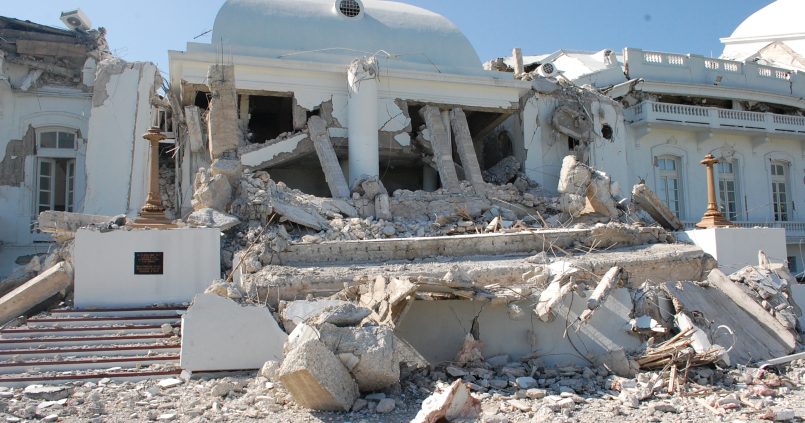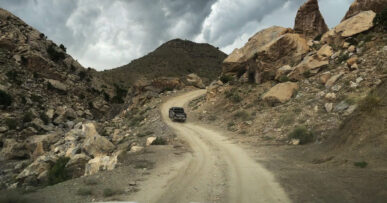- The 2010 Haiti Earthquake, Part 1
- The 2010 Haiti Earthquake, Part 2
- Miyamoto in Haiti: The Presidential Palace, A Fractured Haitian Icon
- Miyamoto in Haiti: Damage Assessment of the Japanese Embassy
- Miyamoto in Haiti: The Well-Oiled Relief Machine Rolling Through Haiti
- Miyamoto in Haiti: Inside a Heavily Damaged Building
- Miyamoto in Haiti: Visiting The Citadel
- Thirty Months in Haiti, Part 1
- Thirty Months in Haiti, Part 2
- Thirty Months in Haiti, Part 3
- Miyamoto in Haiti: A Morning and Afternoon of Hopeful Rebuilding
- Miyamoto in Haiti: School Rebuilding and Construction Continues
- Trente mois en Haïti, 1eme partie
- Trente mois en Haïti, 2eme partie
- Trente mois en Haïti, 3eme partie
- Miyamoto in Haiti: Visiting a Remote School Construction Site Near Cap-Haïtien
- Miyamoto in Haiti: Self-Sustaining Relief
- Miyamoto in Haiti: Love it or Hate it? Love it!
- Miyamoto in Haiti: Lycee de Cite Soleil Rehabilitation Project
- Miyamoto in Haiti: The Hopeful Road to Recovery
- A Day in the Haiti Disaster Zone
- Kidnappers & Disaster
- A Disaster Week in Haiti
Haiti – January, 2010
Early this morning, we got a call from the World Bank officer. He requested us to investigate the National Palace. Our team is excited about this prospect. It is the most famous building in Port au Prince. It is an equivalent to the White House. And now it is infamous for the spectacular collapse. The front domes are collapsed and totally ruined.
As we driving through the disaster scenes of concrete piles and piled up garbage in the morning light, a New York Times and a Wall Street journal are calling us. I guess they found where we are going. I find my cell phone is working. This is the first time I am able to somehow use the device. I inform the journalists that they can ask at the Palace entrance for permission to enter.
We drive through the heavily guarded gate of the National Palace. I walk on the green ground of the Palace. It is a peaceful place with bright sunlight and beautiful gardens. Only sights of US soldiers who are in patrol remind me of the reality.

I meet several of distinct looking gentlemen who are sitting in the front of the Palace. Guilaine tells me that they are cabinet members. A tall man approaches me and says in English “I need you to assess the extent of damage and I also need you to find a safe path to certain areas we need to reach to retrieve critical documents.” I say “OK. Let’s go around the building first and take a look.”
We are heading toward to the Palace now. As we approach the building from the back side, I see the capital building look like structure. It reminds me of California Capital. From the distance, it doesn’t look damaged. But as I approach, I can see what is going on. The top floor of concrete walls is shattered. I also see spectacular collapse of the three domes in the front wing. These domes were used to be a symbol of the Haiti and its history. Now the domes are intact but they lost all supports and 3 story building is reduced to the 2 story building.
It appears that the most of major damages are concentrated at the third, top level for the most of wings. The top level was dynamically amplified by the earthquake motion and the weak shear capacity of the walls caused the collapse.
The building is a large E shape building. The front wing is damaged badly but the many parts of the structure are also intact. The tall chief of staff tells me “Kit, we must find a safe path to reach a room at the third floor. We have an important document we must retrieve.” and he points to the one of the window at the third floor.
In this area, fortunately the floor is not collapsed but the walls are damaged heavily by the seismic shear force. I decide to investigate the inside where things are still intact. A state architect gives me a plan of the structure as a map. He says “Be careful. Some area is not stable and we lost a couple people during the earthquake”
As I strap my headlight on my helmet, Daniel volunteers to go with me. It is always nice to have a partner to watch your back. We quickly climb the back stair to the third floor but we find that the path to the third floor is blocked by the fallen bricks and the broken door. So we enter the second floor and investigate it. We walk through the ball room with a full of chairs. It is all heavily dusted with falling ceiling plaster. We walk through the long undamaged corridor. White curtain is swinging by afternoon breeze as nothing ever happened.

I can’t find the path to the third floor so I come out to meet the team. There is a new person in the army uniform. He says “I am a Colonel of the national police force and I had an office here. I don’t think there is no way to get to the third floor room if the stairs are blocked. You must go from the window.” So he leaves to find a ladder for me.
Marc, a New York Times reporter comes to me and a few questions. I guess he somehow found a way to enter to the palace. This guy is good. Colonel sets up a long ladder to the third floor window which is 40 feet up in the air. When I see the situation, I say “Ok, who is going to climb up?” Everyone just looks at me. I look at Daniel’s way. He is simply enjoying the afternoon sun. I guess I am the only guy wearing a hard hat. I try to explain that I am an engineer not a special force but it seems it really doesn’t matter. A chief of staff says “it is a very important document for the government operation. We must find a way.”
So I am starting climbing the ladder. The vertical loading caring capacity of the structure is intact in the area and I don’t see the danger there. But my 40 feet ladder is swinging slowly in the breeze. I finally reach to the top and climb over the short stone fence. My knee is shaking from excitement and fatigue.

I quickly move to the room and identify the safe path way. The room is buried with fallen bricks but I see the file cabinets. I mark on the plan which the architect gave to me and I quickly look for the way out in the ghostly quiet rooms with fallen ceilings and brick walls.
At this point, there is no way that I would climb down the ladder, so I determine to find another way out. I reach to the first stair which is blocked by the falling objects. I can see the broken door is blocking the path way. I kick several times and finally, I see the day light in the other side. I squeeze my body through the narrow gap between the wall and fallen door. I quickly run down to the ground.
I show the group the pictures I took in the building, and they identify the file cabinets they want. A chief staff looks at me and says, “Haitian people and government really appreciate what you did.” He also asks.” Can this building be repaired?” I say “Because of collapse and damages were limited to the upper floor and certain wings, many part of building can be repaired and strengthening” Everyone looks at me skeptically. But I say “There are engineering technology to make this building not only repaired but make it even better than what was before. Earthquake performance should be operational level performance after next M7 or larger earthquake. ”
Now they are starting to intrigue by my comments. I add “This is a National symbol and heritage of Haiti. Raising back this building will be a statement to people and the world. We shall not be defeated.”


A chief of staff grips my hand and shakes strongly. He asks us to review a police staging station. It is a 2 story, concrete structure. We don’t find any damages or cracks. He carefully asks,” Do you think this building is suitable for the president and cabinet to occupy?” I answer, “Sure. I don’t see any damages caused by the magnitude 7 event. And it appears to be very stout building. You can occupy this right now, but if you are considering occupying this for a long term, then you should do a seismic strengthening. There may be larger or and an earthquake with different frequency content which may affect this building differently.” He asks us to come back next day for further detailed investigation.
This afternoon, we visited several other structures. We visited the undamaged custom office building right next to the shut down port. I saw the crane tilted badly. This is caused by the liquefied soil. The custom office is built of concrete structure with the pile foundation.
The deep piles kept the structure intact in the liquefied soil. I went up to the roof and I found the future columns sticking out above the roof. Some of rebar were exposed and I was able to see the proper ductile details. Well engineered structures performed just fine.

We drove through the hellish downtown. I saw people burning the dead. I saw the fallen prison where 4000 prisoners were escaped and squished police car with the fallen bricks.
We investigated an undamaged hotel where the CNN is stationed. Many journalists were working peacefully in the middle of destruction.

I saw the Children’s Hospital collapsed at the first floor. This is called the soft story failure. The first level was the parking level and didn’t have much walls and weak. I saw none of concrete columns had proper ductile details.
Eric said “This hospital was built only a couple years ago and I know many children died there” I told him solemnly “Engineers make it or break it for our society.”
We drove back to our office totally exhausted. The sky was burning red by the sunset. We better get back quickly; it is not secure to drive in dark. There is no power in the city still.



